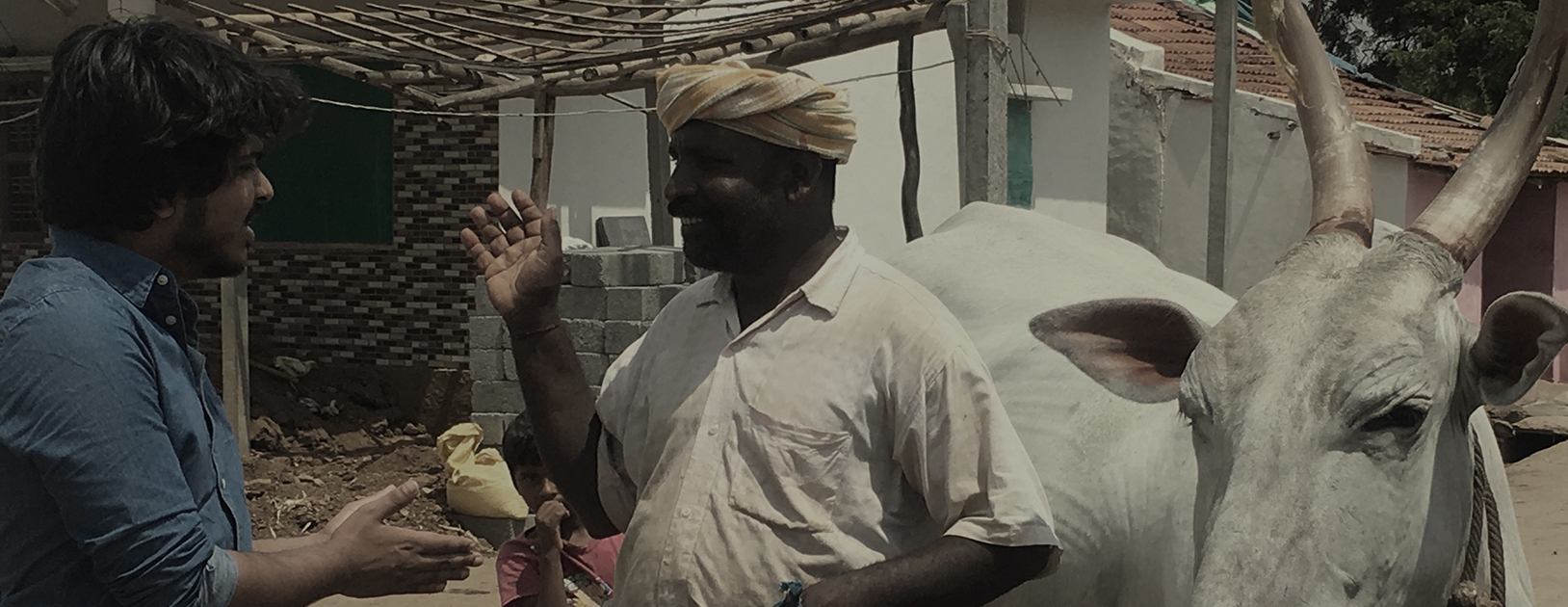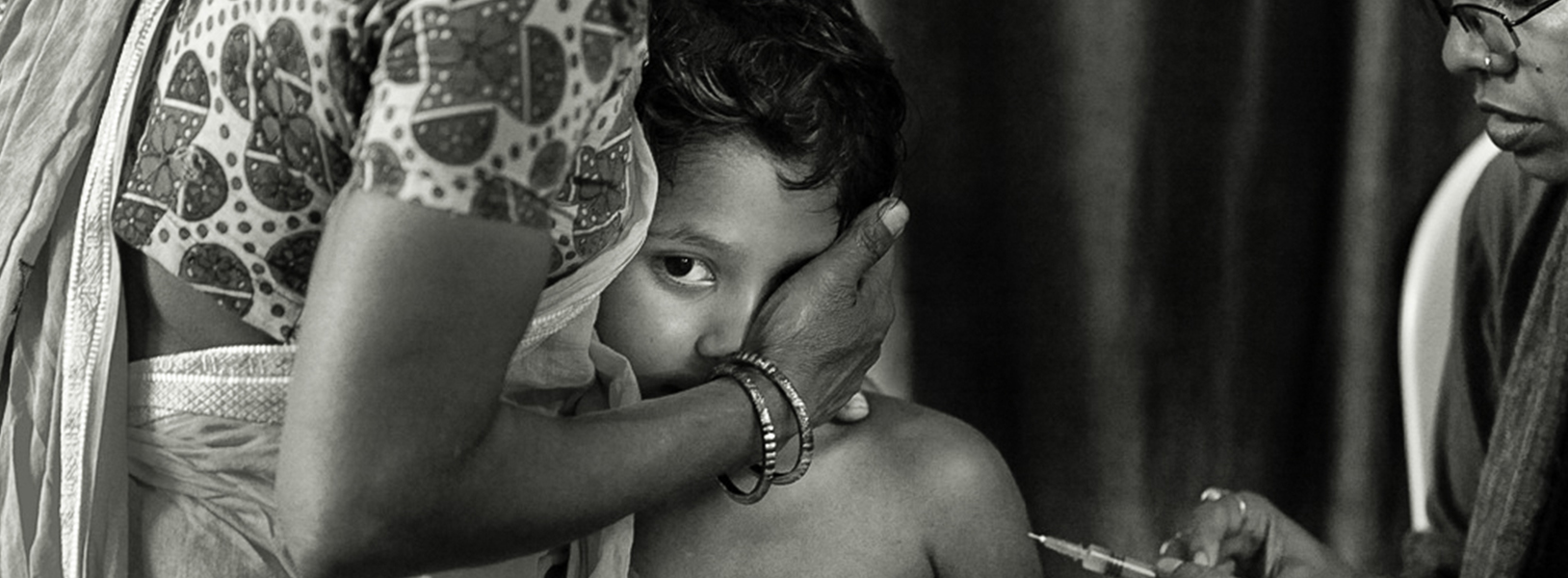FULL VIDEO OF LECTURE BY PRATAP BHANU MEHTA
POLITICS
Watch full lecture (above) by Pratap Bhanu Mehta on The Crisis of Liberal Democracy: Some ‘Rudolphian’ Reflections at the UChicago Center, New Delhi.
FULL VIDEO OF LECTURE BY PRATAP BHANU MEHTA
POLITICS
Watch full lecture (above) by Pratap Bhanu Mehta on The Crisis of Liberal Democracy: Some ‘Rudolphian’ Reflections at the UChicago Center, New Delhi.
The expansion of renewable energy (RE) within India’s electricity system is not a technical question alone. It is also an inherently political struggle between powerful incumbents and disruptive challengers, with destabilising consequences for existing institutional forms and power structures. The existing system is held in place by a supporting configuration of technology, politics and institutions. If RE is to substantially displace fossil fuels, the existing configuration will have to give way to a new such configuration that supports RE. This article explains the existing political and institutional underpinnings of the current electricity system, and discusses the forces that hold them in place and what it will take to shake these loose.
In doing so, it seeks to make two points to two discrete audiences. First, to electricity and energy practitioners, it suggests that looking at the spread of RE only through a technical lens is highly incomplete; the likelihood, speed and impact of RE will be determined by political and institutional factors as well. Second, to broader analysts of India’s economy and politics, it suggests that disruptions in Indian energy are highly likely to also imply disruptive politics and economics; any story of Indian political economy in the coming decade is incomplete without an exploration of shifts driven by changes in electricity politics.
The full article can be accessed here.

PART 5 OF A BLOG SERIES BY THE CENTRE FOR POLICY RESEARCH (CPR) AND PRAYAS (ENERGY GROUP)
ENERGY RESEARCH
The series is titled ‘Plugging in: Electricity consumption in Indian Homes’.
A small set of appliances such as fans, televisions, refrigerators, air-coolers, air conditioners, and water heaters contribute about 50-60% of the total residential electricity consumption in India. Large scale adoption of energy efficient models of these appliances can thereby significantly reduce future electricity consumption in homes. In this post, we look at the government’s Standards and Labeling (S&L) programme and three aspects of its effectiveness in achieving efficiency in the Indian appliances market.
The S&L programme is run by the Bureau of Energy Efficiency (BEE), under the Ministry of Power. Since 2006, the programme promotes efficient appliances through informative labels and by eliminating lower efficiency models through mandatory standards. BEE gives a 5-star rating to the most efficient models and a 1-star rating to the least efficient ones based on a pre-determined schedule, communicated through a label affixed on the appliance (Figure 1). Eight appliance categories, including air-conditioners and refrigerators are mandated to carry these labels, and no model can be sold unless it meets the 1-star rating, at minimum. The programme is voluntary for 13 appliance categories, including ceiling fans and washing machines, and manufacturers can sell these models without BEE labels and with an efficiency less than a 1-star rating.

Mandate and tighten standards
For any appliance, BEE starts with a voluntary S&L programme and usually makes it mandatory in two-three years. BEE’s mandatory list has increased from two to eight and now covers most major appliances including, refrigerators and air-conditioners (Figure 2). Ceiling fans and air-coolers are notable exceptions. More than 95% of the ceiling fans sold do not carry labels and consume more than twice the most efficient model available in India. The programme has been voluntary for ceiling fans since 2010. Air-coolers guzzle much more electricity and are increasingly becoming popular but have not yet been included in the S&L programme. Making a programme mandatory for an appliance category ensures that inefficient models are not sold in the market.
| Mandatory Appliances | Voluntary Appliances |
| Frost Free Refrigerators | Induction Motors |
| Tubular Fluorescent Lamps | Agricultural Pump Sets |
| Room Air Conditioners | Ceiling Fans |
| Distribution Transformers | Domestic LPG stoves |
| Room Air Conditioners (Cassette, Floor standing, Tower, Ceiling) | Washing Machine |
| Direct Cool Refrigerators | Computer |
| Electric Geysers | Ballast |
| Colour TV | Office Equipment |
| Diesel Engine Driven Moonset Pumps for Agricultural Purposes | |
| Solid state inverters | |
| Diesel Generators | |
| Variable capacity air conditioners | |
| LED lamps |
BEE also periodically tightens the standards and labels to keep up with and promote the most efficient commercially available technologies. So, today’s 5-star model may become a 3-star model in the next phase and more efficient models can get the new 5-star tag. BEE has periodically tightened ratings for frost-free refrigerators and the current 5-star ratings are comparable with international standards, but the 1-star rating still has a scope for improvement. The ratings for air-conditioners on the other hand can be tightened further to align with the most efficient models available in India as well as abroad (Figure 3).

Nudges and bulk procurement programmes
Mandating and tightening star-ratings is necessary but may not be sufficient for large scale adoption of energy efficient appliances. For example, appliance production data shows a significant drop in the production of 5-star rated frost-free refrigerators after tightening in 2014 and 2016 (Figure 4). Also, the share of 3-star models is the highest in most of the appliance categories.
To promote 5-star rated appliances, complementary approaches like behavioural interventions and bulk procurement programmes can be useful. Consumer behaviour research shows that consumers, faced with a menu of options, often simplify their decision making by choosing an option that resembles a ‘middle’ or ‘compromise’ option. Is this resulting in people buying more 3-star rated models? Can this be addressed by designing interventions that can nudge people towards buying more 5-star rated models? BEE’s recent app to estimate monetary savings from an efficient appliance helps consumers in understanding the labels. More such initiatives can be effective.

Bulk procurement programmes (similar to UJALA for LED bulbs) can also help in market transformation to energy efficient appliances. These programmes can incentivise the production of the most efficient appliances (beyond 5-star) to pull up efficiency levels in the market. BEE can then further push market efficiency up by tightening standards. The programmes can smoothen the transition phase to higher standards and labels. However, one needs to be cautious about the rebound effect where consumers buy more appliances because the programme has made buying and using them cheaper thus negating the expected savings.
Credibility of the S&L programme
A final point is regarding the credibility of the S&L programme. Transparency in the standards setting process and ensuring conformance with the standards is important to strengthen credibility. BEE has recently taken positive steps in this direction. It published proceedings of the technical committees that set the standards and labels, and data on appliances production across various categories is now available on the BEE website. Going ahead, BEE can also publish the check-testing results it is supposed to conduct on a random sample of appliances collected from the market. A periodic testing for conformance with the standards can significantly increase the consumer trust in the labels. If the models do not comply with the standards, BEE can publish the results in newspapers to warn consumers, as it has done once in the past.
To summarise, the Standards & Labeling Programme can effectively improve the efficiency of India’s household appliances, as discussed in this post. However, this is a resource intensive activity. Given the limited resources, BEE can instead prioritise a smaller number of appliances with rigorous implementation, rather than adding more appliances to the programme.
In the next post, we examine the appliances owned within affordable housing, and the extent of their energy efficiency.
This piece is authored by Aditya Chunekar and Mrudula Kelkar at the Prayas (Energy Group).
This blog series is also available on the Prayas website here.
This article was republished in Eklavya Magazine in Hindi under ‘स्रोत विज्ञान एवं टेक्नॉलॉजी फीचर्स’, and can be accessed here.
To subscribe to email updates on the series, click here.
Other posts in this series:

NEW WORKING PAPER BY PRANAV KUTTAIAH AND NEELANJAN SIRCAR
ELECTION STUDIES
Pranav Kuttaiah, Research Assistant, and Neelanjan Sircar, Senior Fellow, at Centre for Policy Research conducted field work in Karnataka in the run-up to the state elections. Ahead of the vote counting on 15 May, 2018, Sircar and Kuttaiah, analyse the complexities on the ground in a new working paper. Access the full paper here.
FULL VIDEO OF PANEL DISCUSSION AS PART OF CPR DIALOGUES
INTERNATIONAL POLITICS
Watch the full video of the panel discussion on ‘The Emerging World Order and India’s Role’, organised as part of CPR Dialogues, featuring Ibrahim Gambari, Nabil Fahmy, chaired by Ambassador Shyam Saran.
The world is undergoing a momentous political, economic and social transformation and this is leading to major shifts in inter-state relations. The centre of gravity of the global economy is shifting from the trans-Atlantic to the trans-Pacific and in its wake existing security arrangements and alignments among states are also undergoing a change. The emergence of China as a front ranking power is one aspect of this transition, but Asia is now home to a cluster of major powers deploying significant economic and military capabilities. The trend towards multipolarity in Asia appears to be irreversible but this diffusion of power requires an appropriate economic and security architecture. What role can emerging powers like India play in shaping the Asian order? This is one challenge.
The other is the reality of our increasingly inter-connected and interdependent world, in which the salience of cross-national global issues such as Climate Change, Cyber Security, Proliferation of Weapons of Mass Destruction and Global Pandemics like Avian Flu, require global responses delivered through institutions of international governance and multilateral processes.
Paradoxically, however, it is precisely at this historical inflexion point that we are witnessing a wave of narrow nationalism and rejection of multilateral institutions and collaborative initiatives. This is most damaging for developing countries whose interests are best served through a rule-based multilateral order. What role can emerging countries like India play in strengthening and in creating, where necessary, institutions of international governance, including the United Nations and reviving multilateral processes such as the World Trade Organization? This special session brought together three very distinguished thinkers and high ranking diplomatic practitioners from the developing world to share their own perspectives on the transformation taking place in the world order, its scope, nature and possible evolution.
Dr Nabil Fahmy, former Foreign Minister of Egypt looked at this subject from the unique standpoint of a leading country in the Arab world; Dr Ibrahim Gambari, former Foreign Minister of Nigeria, presented an African perspective. The session was a rare and unprecedented opportunity to look at the world through a lens very different from the dominant Western narrative that sometimes conditions our thinking. The session was moderated by Shyam Saran, former Foreign Secretary of India, who shared an Indian view on the theme of the session. The aim of the session was not only to bring to the table perspectives from key developing countries which also play important roles in their respective regions but which also have a record of contributing to multilateral institutions and regional arrangements. It will also enable us to see India through their eyes, what India’s emergence means to them and what their expectations are concerning India’s role in this changing world order. It is hoped that this high level panel will be the first of many such conversations with fellow developing and emerging countries across the world. India will need to work together with them if it aspires to be one of the architects of the new world order.
Ambassador Shyam Saran is Member of the CPR Board and former Indian Foreign Secretary.
Ibrahim Gambari is the former Foreign Minister of Nigeria.
Nabil Fahmy is the former Foreign Minister of Egypt.
The question and answer session that followed can be accessed here.
Coverage of the panel by ThePrint (digital partner for CPR Dialogues) can be accessed here.
Access the key takeaways about the Dialogues by Ibrahim Gambari and Nabil Fahmy.
Watch all other sessions of the Dialogues below:

CPR FACULTY ANALYSE
ECONOMY POLITICS
As Raghuram Rajan announces his departure not seeking a second term as RBI (Reserve Bank of India) Governor, read below the analysis to date by CPR faculty, both in the run-up to and post Rajan’s recent announcement:
In A Rajan a day in May 2016, Pratap Bhanu Mehta deconstructed the ‘institutional politics’ around the RBI governor, and what it revealed ‘about the nature of government’, writing that the premium on Rajan’s ‘public credibility’ went up considerably due to the government’s emphasis on ‘spin’.
In The Numbers RBI governor Raghuram Rajan did not get: 2014 and 282, Sanjaya Baru writes post Rajan’s announcement of returning to the University of Chicago, that it was the RBI governor’s inability to come to terms with India’s political economy that led to his exit.
Rajiv Kumar writes in The Indian Express that Rajan ‘must take his share of the blame for this unfortunate situation’, since by going public with his criticism of the government, he crossed red lines in trying to ‘combine the role of a senior policy mandarin with that of a public intellectual’.

BOOK CHAPTER BY NAMITA WAHI
RIGHTS
Namita Wahi, fellow at CPR wrote a book chapter’The Fundamental Right to Property in the Indian Constitution’ in ‘The Oxford Handbook of the Indian Constitution’. Read below an abstract of the book chapter:
The Fundamental Right to Property enjoys the unique distinction of not only being the second most contentious provision in the drafting of the Constitution, but also the most amended provision, and the only fundamental right to be ultimately abolished in 1978. This book chapter narrates the evolution of the right to property in the Indian Constitution, and outlines the chequered trajectory of its doctrinal development, following the First (1951), Fourth (1955), Seventh (1956), Seventeenth (1964), Twenty-Fourth (1971), Twenty-Fifth (1972), Twenty-Sixth (1972), Twenty-Ninth (1972), Thirty-Fourth (1974) and Thirty-Ninth (1975) constitutional amendments.
Ultimately, the Forty Fourth Constitutional Amendment, 1978, deprived the ‘right to property’ of its ‘fundamental right’ status. The trajectory of the right to property in the Constitution, as seen from the drafting of the original constitutional property clause, and its evolution through judicial interpretation, legislation, and constitutional amendment, demonstrates the Indian State’s continual attempts to reshape property relations in society to achieve its goals of economic development and social redistribution. Each iteration of the property clause favoured property rights of certain groups and weakened those of others and was the product of intense contestation between competing groups that used both the legislature and the judiciary to further their interests. Concomitantly, lurking behind the development of the Supreme Court’s doctrinal jurisprudence is the Court’s fear of arbitrariness of State action.
To access the full chapter, click here

AS PART OF ‘POLICY CHALLENGES – 2019-2024: THE BIG POLICY QUESTIONS FOR THE NEW GOVERNMENT AND POSSIBLE PATHWAYS’
CPR INTERNATIONAL POLITICS SOUTH ASIA
By Nimmi Kurian
India’s neighbourhood policy makes for a feel-good narrative of reimagining borders as bridges and speaks a comfortable cosmopolitan language, laying claim to a universal vision of globalism. The country’s diplomatic engagement has begun to acquire a level of diversity and complexity in recent years with a host of subregional initiatives such as the Bay of Bengal Multi-Sectoral Initiative for Technical and Economic Cooperation (BIMSTEC), the Mekong Ganga Economic Cooperation (MGC), and the Bangladesh China India Myanmar Economic Corridor (BCIM). The past five years have seen a further deepening of this idea at the substantive as well as rhetorical levels with initiatives such as the Neighbourhood First policy, the rechristened Act East policy, Prime Minister Modi’s high-profile visits to South Asian capitals, and the setting up of a States Division at the Ministry of External Affairs (MEA).1
But for all its enthusiastic rhetoric, there is a curious paradox at the heart of India’s subregional discourse. While the border states are projected as bridges between India and the neighbourhood, in actual practice India’s neighbourhood policy remains unambiguously top-down and continues to be firmly led and steered by New Delhi. This is both puzzling and problematic since the notion of subregional cooperation is fundamentally premised on making geographically proximate border regions within two or more countries important sites of cooperation. Standing this logic virtually on its head, it is New Delhi that has regularly hosted BIMSTEC’s Working Groups on regional governance issues such as disaster management, customs cooperation and regulation of passenger and cargo vehicular traffic. A comparison with the working of China’s subregional discourse is both revealing and sobering. China’s border province of Yunnan, for example, regularly hosts the Greater Mekong Sub-region Working Groups on a range of regional governance issues such as environment, tourism and agriculture. The centralising impulse is again all too evident in India’s discourse on border trade, for instance in Dharchula, Uttarakhand, an ancient border town located on the trans-Himalayan trading routes with Nepal and China. Trade permits required to conduct trade are no longer issued at the border but instead in Dehradun, the state capital, entailing protracted procedural delays and costs. Taken together, dichotomies such as these represent a classic instance of suboptimal subregionalism at work, a discourse that has clearly ended up aiming low and hitting lower.2
These dichotomies also indicate that there has been virtually no political incentive to invest in an institutionalised two-way engagement between national and subnational policy actors.3 This is a cause for serious concern and can result in institutional gridlocks between the Centre and states at a time when international engagement by border states is increasing. If recent trends are anything to go by, resource conflicts between the national and subnational governments could be a potential minefield. Bihar’s demand for an equity stake in power projects being executed by India in Bhutan as well as the Teesta river dispute between India and Bangladesh arising out of the deadlock between the Centre and West Bengal bring out the inadequacy of existing institutional arrangements in negotiating such conflicts. This is also adding an edge to domestic resource conflicts as can be seen in the recent constitutional dispute between Nagaland and the Centre wherein the Centre contested Nagaland’s claim that Article 371 (A) of the Constitution conferred upon it the right to develop its natural gas reserves. If New Delhi does not attempt to fill this policy vacuum, these growing federal-state conflicts will erode overall state capacity in damaging ways. The capacity or the mandate of existing institutional forums such as the MEA’s States Division or the Inter-State Council, in their current makeup, to mediate and resolve these conflicts is open to debate. Recalibrating these federal-state platforms to more effectively anticipate and address such challenges has to be the first order of business for the Indian government.
When Practice Meets Policy
By privileging the formal, state-led, inter-governmental processes, Indian diplomacy has ended up completely overlooking a range of practices at the border regions that are fundamentally reshaping India’s engagement with its neighbourhood. Subnational-steered policy networks need to be recognised as a field of governance in their own right, with a capacity to rescale India’s foreign policy beyond solely national frames. Local networks, both formal and informal, can work with – and not necessarily at cross-purposes – with the Centre on regional public goods. What is most striking about India’s evolving subnational diplomacy is the sheer diversity of transborder exchanges being steered by border states in terms of their nature (formal and informal); activities (social, economic, cultural, political); duration (sustained and episodic); and actors (public and private).
Bottom-up market-driven processes of economic integration are today resulting in the rise of a new set of stakeholders with stakes in subregional integration processes. There are three reasons why a serious engagement with these processes is vital. First, there is growing evidence that border regions are beginning to effectively engage the Centre to deepen subregional integration processes.4 The effects of this lobbying can be seen in India’s decision to open 70 border haats along its boundary with Bangladesh, with 35 along the border with West Bengal; 22 at the Meghalaya border; five in Tripura and four in Assam. Meghalaya and Tripura recently successfully lobbied the central government to permit the export of surplus power to Bangladesh. Second, direct transborder subnational links have on occasion bypassed the Centre to break difficult logjams and bottlenecks. A case in point is the construction of the 726 MW Palatana gas power project in southern Tripura. Given the challenges in transporting heavy equipment to Tripura due to the difficult terrain, Bangladesh allowed transhipment of heavy turbines and machinery through its territory. Bangladesh’s decision to allow transhipment became a critical factor in the successful completion of the project. Palatana will be bookmarked in India’s evolving subnational cross-border engagement as arguably one of the first instances of subregional problem solving. Third, the greatest discursive potential of subregionalism arguably lies in its capacity to position the local as a central actor in the governance agenda. It will be suboptimal to conceive them as mere agents for monitoring the implementation of service delivery systems. Consultative processes between key institutional actors have to be both continuous and inclusive, bringing together relevant local line departments and officials across all levels – from planning, through monitoring to implementation. The locational advantage of border states as primary points of contact with the neighbourhood can also help plug critical transboundary governance gaps. For instance, border regions can play an important bridging function by facilitating networked governance in subregional Asia. Several such networks – such as the Asian Environmental Compliance and Enforcement Network (AECEN), South Asian Biosphere Reserve Network (SeaBRNet), Asian Network of Sustainable Agriculture and Bioresources (ANSAB), Freshwater Action Network South Asia (FANSA), Himalayan Conservation Approaches and Technologies (HIMCAT), and South Asian Network on Environmental Law (SANEL) – are already in existence.
The Future is Federal
Nudging Indian foreign policy towards a practice-based template has the potential to incorporate a rich and hitherto untapped corpus of domain and field knowledge that national-level policymakers have no means of acquiring on their own. Policy need not always dictate practice; instead, policy and practice need to co-evolve into an institutionalised two-way flow of communication. Institutionalising consultations with a new set of border stakeholders such as legislative bodies both at the central and state levels, media and civil society organisations can go a long way in ensuring that these actors become informed interlocutors in shaping India’s evolving neighbourhood policy. A lot will, however, depend on the feedback loops that are put in place for creative ways of power sharing, institutional learning and adaptation to produce inclusive outcomes. It is only then that one can create a level playing field and a measure of parity between central and state level policy actors. India’s neighbourhood policy has the potential to produce a modest but valuable space for border states to become active partners in framing and fashioning the terms of India’s engagement with its neighbourhood. But this potential institutional innovation in Indian foreign policy is neither guaranteed nor infallible. If it is to succeed, leveraging the location of border states needs to go hand in hand with the federalisation of India’s foreign policy.
Other pieces as part of CPR’s policy document, ‘Policy Challenges – 2019-2024’ can be accessed below:
Listen to the 44th episode of ThoughtSpace (above) featuring Shyam Saran, Former Foreign Secretary and Senior Fellow, CPR and Yamini Aiyar, President & Chief Executive of CPR.
In the last few weeks, a crisis has been brewing on our borders between India and China over the Line of Actual Control (LAC). Late last week, in an unprecedented move, top Generals from both countries met to seek a resolution to the crisis. The discussions have opened up the prospects of a second phase of dialogues. Against the backdrop of these dialogues, we explore the dynamics of India-China relations, the nature of this particular border dispute and the immediate and long-term implications this may have on India-China ties.
Saran, who is an expert on China, sheds light on the history of border disputes with China despite the LAC, the growing asymmetry of power between the two countries and calls for constraining Chinese aggression by cultivating strong ties with countries like the US. He also highlights that it is important to continue engaging on issues that may be mutually beneficial while at the same time confronting China where Indian interests are being threatened.

AN ANALYSIS
EDUCATION
The Public Accountability and Governance in Education (PAGE) project at CPR has written a series of policy briefs and analytical articles in the run-up to the New Education Policy (NEP), 2015, to be announced next month.
The NEP will be revised after more than a decade, and will be critical in defining access to and unversalisation of quality education, going forward.For a more detailed understanding of the processes and issues, read below:
Policy brief exploring how the NEP will impact school education: School Education in New Education Policy.
Policy brief analysing the importance of the no-detention policy and continuous and comprehensive evaluation, which is part of the RTE: No-Detention Policy and Continuous and Comprehensive Evaluation.
Opinion pieces by Kiran Bhatty:
On the importance of consulting experts in the process of framing the Policy: Don’t Make Experts the Enemy in Framing a New Education Policy.
On a complete lack of a systematic assessment of the problems in the school sector to accurately inform the NEP: You Can’t Get the New Education Policy Right by Asking the Wrong Questions.